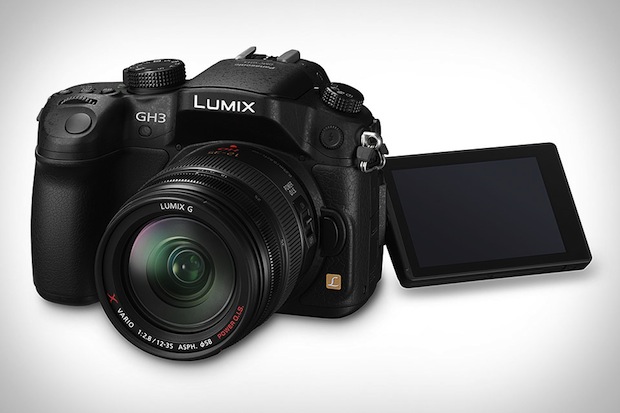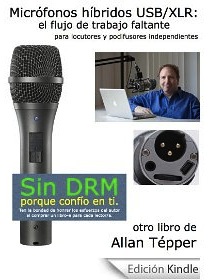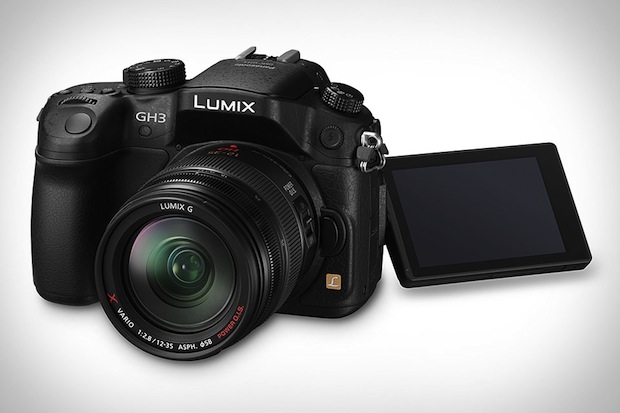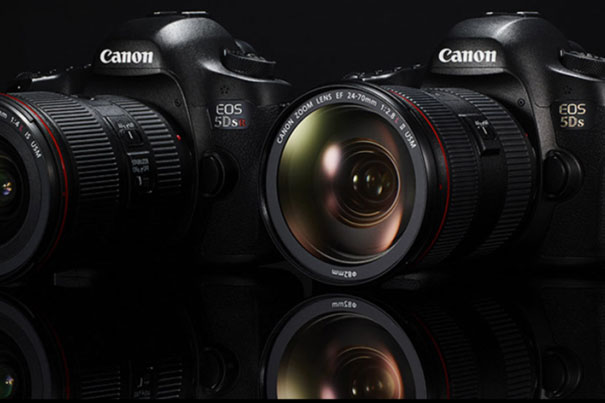
After a much extended product cycle than first expected, Panasonic has just announced the Lumix GH3 camera, which will replace the GH2, which is even called the “predecessor” in the official GH3 press release dated September 17, 2012. The GH3 is somewhat larger and tougher, which I know many will applaud, and is full of audio/video improvements including a full 3.5mm mic input instead of the prior 2.5mm, manual audio levels when recording, a headphone jack for monitoring, as well as several new video recording formats, including much higher bit rate recording without having to hack the camera. Ahead you’ll see a promotional video from Panasonic and many of its new audio/video specs.
DSLR or DSLM?
According to Panasonic:
In Europe and the United States, digital SLR cameras are called DSLR and mirrorless cameras are referred to as CSC (Compact System Cameras). Panasonic uses the term DSLM (Digital Single Lens Mirrorless) cameras to refer to its mirrorless models, and continues to develop attractive camera systems with interchangeable lenses. With the introduction of the high-end LUMIX GH3, Panasonic will be able to provide more people with the experience of exploring the remarkable potential of the digital single lens mirrorless camera.
Focus of this article
This first look article at the GH3 focuses on general and audio/video improvements in the GH3, based upon the press release and my audio/video experience in general and with the predecessors. This article does not focus on the camera’s still photo functions.
Dimensions/weight
- Dimensions (W x H x D): 132.9 x 93.4 x 82.0 mm / 5.23 x 3.68 x 3.23 inch (excluding protrusions)
- Weight with battery, body and SD card: approximately 550 g (19.40 ounces)
- Weight with body only: approximately 470 g (16.58 ounces)
- Weight with battery, body, SD card, H-HS12035 lens: approximately 855 g (30.16 ounces)
- Weight with battery, body, SD card, H-VS014140 lens: approximately 1,010 g (35.62 ounces)
Tougher body
The new GH3 body features a magnesium alloy full diecast body and advanced splash/dust proof construction that was achieved by tightly sealing the sections of the camera body to enable shooting under extreme conditions. Panasonic defines the extreme operating conditions for the GH3 as:
Operating temperature: 0°C to 40°C (32°F to 104°F)
Operating humidity: 10%RH to 80%RH
Reduced internally-induced heat
Panasonic states:
Heat generated during long continuous recording can cause problems. It not only affects internal components but can also degrade image quality. Effective thermal diffusion is an essential design challenge. By drawing on the expertise accumulated through its many years of developing camcorders, Panasonic has revamped and redesigned the electronic parts arrangement and internal structure to achieve the optimum layout. This has eliminated heat problems in the LUMIX GH3.
Audio improvements (recording and monitoring) in the GH3 over the GH2
In addition to the built-in stereo microphone, the GH3’s external microphone input is now 3.5 mm rather than 2.5mm. The press release mentions nothing about any potential improvements in the audio preamp. This is a key item I’ll check if Panasonic sends me an evaluation unit. There is finally a 3.5mm headphone jack. This important feature has been missing from DSLRs and DSLMs in this price range. If I receive an evaluation unit, I’ll test the gain of that output to see if it is loud enough.
In addition, the GH3 now offers linear PCM (LPCM) for non-compressed audio, although apparently only when recording in MOV. See the different recording options ahead.
Video monitoring improvements in the GH3 over the GH2
The GH3 now uses OLED (organic light-emitting diode) displays both in its 16:9 LVF (Live View Finder) and in the rear free-angle 3 inch (7.5 cm) monitor, which has static touch control. In the LVF, Panasonic increased the visible spatial resolution to 1,744K-dot equivalent. This new 16:9 LVF also boasts approximately 1.34x/0.67x (35mm camera equiv.) magnification and 100% field of view and eyepoint of approximately 21 mm.
The aspect ratio of the monitor is 3:2, so there must be bands or data in the dead area in order to display 16:9 video. The spatial resolution of the OLED monitor is 614,000 pixels, and it rotates 180° to the side and tilts 270° up and down offers approximately 100% of field of view. The OLED rear monitor adopts static touch control for smoother operation either in shooting or in playback.
As with the GH2, the mini HDMI port on the GH3 allows external monitoring while recording video. A menu adjustment continues to offer the option to include or exclude menus and indicators superimposed on this output. With the GH2, external recording with a 4:2:2 recorder was possible but challenging. If I receive a review unit, I’ll verify whether this is less challenging with the GH3.
Is the GH3 still segregated like its predecessors, or is it now a “worldcam” like the AF100?
The press release is unclear about this, as I believe it was also with the predecessors’ press releases. Here’s what the press release says, verbatim:
Users can freely choose the format from AVCHD, AVCHD Progressive, MP4 or MOV with the frame rate at 60p (NTSC) / 50p (PAL), 30p (NTSC) / 25p (PAL) or 24p according to the usage
Since the prior models (GH1 and GH2) rounded frame rates and field rates to the closest integer in quoting, but not in practice (which drives me crazy). I imagine that they are again referring to 59.94p, 50p, 29.97p, 25p, and 23.976p. However, it is still isn’t clear whether the GH3 is “worldcam” or segregated. Based upon what I recall from the GH2, I imagine that the 23.976p recording will be native (without pulldown), and that the 25p and 29.97p will be benign PsF (as defined in my PsF missing workflow series).
Video imaging and recording improvements in the GH3 over the GH2
Compared with the GH2 (which required hacking to get higher bit rates and modes), the GH3 now comes with more variety of options in its format and bit rate.
Panasonic’s own words about the video quality improvements:
The newly developed 16.05 effective megapixels Live MOS sensor boasts wide dynamic range and high sensitivity image recording even at ISO 12800 or ISO 25600 in extended mode. The key point here was reducing noise, for which Panasonic focused on the following three areas: (1) minimizing noise in the sensor, (2) preventing sensor noise from entering the output signal, and (3) preventing noise from entering the signal processing circuit, power supply line and grounding line. To reduce noise, it is also important to design the power supply wiring and the signal wiring connected to the engine to be as close to the same length as possible. These measures not only suppress noise but also help to improve processing speed. Standard sensitivity is from ISO 200 to ISO 12800, but the user can set sensitivity to ISO 125 or ISO 25600 by using an extension function. The LPF (Low Pass Filter) has been also newly designed to minimize generation of moir© while drawing maximum resolution of the image out of the sensor.
The image processor Venus Engine is also refined to achieve superior noise reduction. With a combination of 3DNR (3D Noise Reduction) and MNR (Multi-process Noise Reduction), both bright area and dark area are faithfully reproduced with minimum noise across the entire focusing range in high sensitivity image recording.
Video códecs and formats:
Although the GH3 offers AVCHD, AVCHD Progressive, MP4, and MOV, all video encoding in the GH3 is H.264 according to the press release. Although the GH3 now offers timecode, this is not available with the MP4 setting. Also, 59.94p or 50p video recording “is not available in AVCHD and MP4 video recording,” so I conclude that these framerates (which are great to create natural-looking, organic slow motion in post by conforming to your project’s/sequence’s framerate) is only available with MOV.
The GH3 is capable of recording ultra high bitrate video recorded up to 72 Mbps (ALL-Intra) or up to 50 Mbps (IPB), and it is capable of recording continuously for an “unlimited” time, except the version sold in certain 50 Hz countries where the maximum recording time is limited to 29:59 (29 minutes and 59 seconds) due to excessive import tariffs on devices that record digital video longer than that duration. As stated in the prior section, LPCM uncompressed audio is only availing in the MOV mode.
Sequential multiple files?
The press release states that when recording video in MOV, AVCHD Progressive and AVCHD, the GH3 automatically generates multiple seamless files for continuous recording, and that during playback, the AVCHD Progressive/AVCHD files are reproduced with seamless, interruption-free continuity. Readers who have read my prior articles know that I prefer the use of standalone files using a modern format (i.e. ExFat, HFS+, UDF). The press release does not specifically states whether Panasonic has switched the GH3 from the previously-used archaic FAT32 (which forces the creation of sequential files) to ExFAT, HFS+, or UDF. But as I analyze their words, it sounds like perhaps the MP4 files are recorded as complete and standalone per clip (although with compressed audio, without timecode, and perhaps at any framerate other than 50p or 59.94p). So perhaps users of the GH3 will pick MOV and get sequential files with timecode and uncompressed audio, or MP4 to have standalone files, but with compressed audio, without timecode, and not at 50p or 59.94p. To me, it sounds like either a compromise or that the press release was not properly worded. Of course, I’ll verify this if they send me a review unit.
Slow/fast motion modes
Panasonic states:
The Slow / Fast-Motion mode enables slow-motion (40%/ 48%/ 80%) and fast-motion (160%/ 200%/300%), all in Full-HD.
So with these modes, you won’t have to conform in post: you’ll do it all in-camera. However, is not clear yet whether they are available for all modes or only with MOV.
Auto-focus, auto-focus tracking, Face Recognition AF, and even rack focusing
Panasonic states:
Not only full-time AF, AF Tracking and Face Recognition AF are also available. The Touch AF in video recording also lets users enjoy professional-like rack focusing. Just by pointing the subject, the focus is shifted to it and let it stand out to attract attention. They bring the same great ease and comfort to your video work, especially when mounting the LUMIX G lens with silent design.
All cameras of LUMIX G adopt Contrast AF for its focus system. Compared with the Phase difference system AF, the Contrast AF boasts higher accuracy especially in shooting with bright lens with small F value.
The DMC-GH3 features ultra-high-speed Light Speed AF makes it possible to capture even the fast-moving subject clearly. Not only the accuracy but also the speed excels by far than the high-end DSLRs with Phase difference AF with the advanced Contrast AF system in DMC-GH3. The camera and the lens exchanges the digital signal at max. 240 fps to minimize the time to focus.
Wireless connectivity via WiFi
The GH3 has a built-in WiFi module for wireless connectivity (IEEE 802.11 b/g/n). The press release states that the WiFi module in the GH3 includes 11 channels between 2412 MHz – 2462 MHz, but sadly does not mention anything about the 5 GHz band. I hope that it was simply an omission on the press release, not in the device. Of course, I’ll verify this if I receive an evaluation unit. The press release thankfully mentions WPA/WPA2 encryption, as well as infrastructure mode. Via WiFi, you can control the camera wirelessly from your smartphone (Android or iOS) or tablet and even use it as a remote monitor. Whatever the camera is seeing is displayed live on the smartphone/tablet and it is possible to set various controls including focus setting, exposure compensation, ISO, white balance and Photo Style in addition to shutter release via live view using WiFi.
To make sure you continue to see my upcoming articles, sign up to my mailing list here.
My latest ebook
I have just published an ebook in two languages.
The format is Kindle, but even if you don’t have a Kindle device, you can read Kindle books on many other devices using a free Kindle app. That includes iPad, iPhone, Android phones, Android tablets, Mac computers, Windows computers, some Blackberry phones and Windows 7 phones.
In English:
In English, it is currently available in the following Amazon stores, depending upon your region:
- At Amazon.com (for all of the Americas and the Republic of India)
- Amazon.co.uk (United Kingdom)
- Amazon.de (Germany)
- Amazon.es (Spain, pero a lo mejor lo prefieres en castellano, a continuación)
- Amazon.fr (France)
- Amazon.it (Italy)
If you’re going to buy a Kindle book as a gift, you must do so via the Pan-American Amazon store (the first one listed above), regardless of where you live or where the recipient lives.
En castellano:
En castellano, está disponible actualmente en las siguientes tiendas Amazon, según tu región:
- Amazon.com (todas las Am©ricas y la República de la India)
- Amazon.co.uk (Reino Unido)
- Amazon.de (Alemania)
- Amazon.es (España)
- Amazon.fr (Francia)
- Amazon.it (Italia)
Si vas a comprar un libro Kindle como regalo, debes hacerlo vía la tienda panamericana de Amazon (la primera de la lista) sin importar donde vivas tú o donde viva la persona que recibirá el regalo.
Allan T©pper’s books, consulting, articles, seminars & audio programs
Contact Allan T©pper for consulting, or find a full listing of his books, articles and upcoming seminars and webinars at AllanTepper.com. Listen to his TecnoTur program, which is now available both in Castilian (aka “Spanish”) and in English, free of charge. Search for TecnoTur in iTunes or visit TecnoTur.us for more information.Disclosure, to comply with the FTC’s rules
No manufacturer is specifically paying Allan T©pper or TecnoTur LLC to write this article or the mentioned books. Some of the other manufacturers listed above have contracted T©pper and/or TecnoTur LLC to carry out consulting and/or translations/localizations/transcreations. Many of the manufacturers listed above have sent Allan T©pper review units. So far, none of the manufacturers listed above is/are sponsors of the TecnoTur programs, although they are welcome to do so, and some are, may be (or may have been) sponsors of ProVideo Coalition magazine. Some links to third parties listed in this article and/or on this web page may indirectly benefit TecnoTur LLC via affiliate programs.
Copyright and use of this article
The articles contained in the TecnoTur channel in ProVideo Coalition magazine are copyright Allan T©pper/TecnoTur LLC, except where otherwise attributed. Unauthorized use is prohibited without prior approval, except for short quotes which link back to this page, which are encouraged!

Filmtools
Filmmakers go-to destination for pre-production, production & post production equipment!
Shop Now













